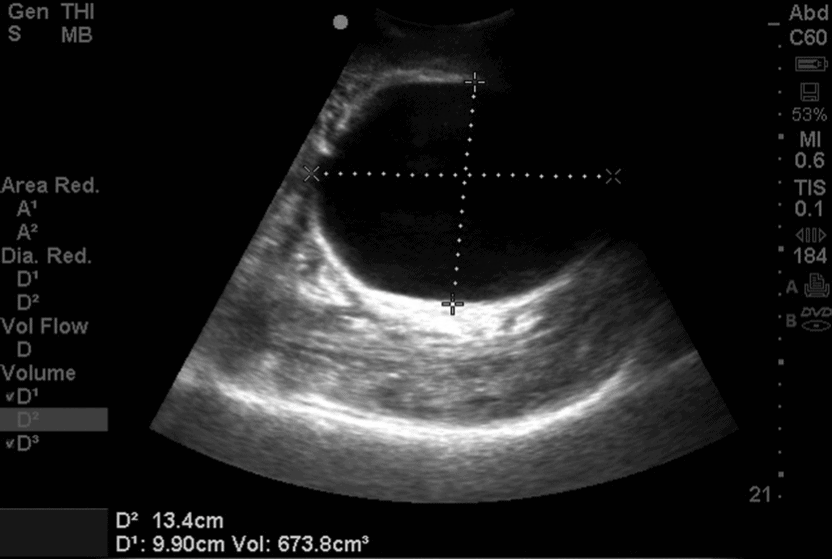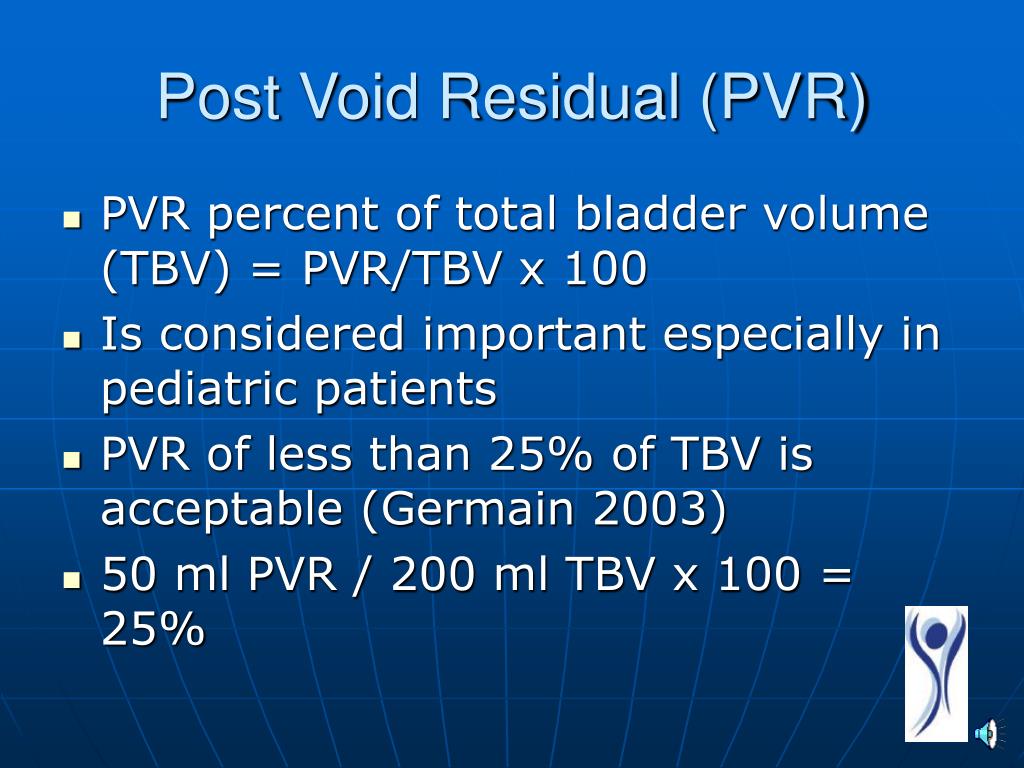

Ethical standards were performed according to the 1964 Declaration of Helsinki and its later amendments. The aim of this study was to assess, in males with LUTS, the relationship between PVR-R and pathological bladder emptying diagnosed by Pressure-flow studies (PFS).īetween January 2013 and June 2019, PVR-R and PVR were evaluated in a cohort of males underwent PFS for LUTS in all the urodynamics were performed in the Department of Urology, AOUI Verona. Contrary, PVR-R is a ratio linked to bladder capacity and voided volume and, hence, more reliable in representing the degree of failure of the bladder emptying.

This may be a possible explanation of the poor and controversial predictive value of PVR. Consequently, PVR is not comparable between individuals and not even in the same person.

The same PVR value can have different meanings and relevance in patients with different bladder capacities, and also in the same male based on the bladder filling at the uroflowmetry (UF). This parameter indicates the non-functional bladder storage of urine after micturition and is better related to the voiding emptying than the PVR per se. PVR-R is a percentage representing the ratio of PVR to BV. Since the role of PVR in males with LUTS has given only poor and inconclusive data, we investigated a new and more functional parameter, post-void residual urine ratio (PVR-R). In DUA subjects PVR variations were related to bladder volume (BV), while BVE had no significant relationship with BV and did not change in repeated measurements in the same patient. This parameter has been found to be more reliable than PVR also in the evaluation of patients with detrusor underactivity (DUA). īladder voiding efficiency (BVE ×100) has been introduced to overcome some limits of PVR. Furthermore, in patients with LUTS, high baseline PVR is associated with an increased risk of symptom progression. The identification of patients at risk for acute urinary retention may be achieved monitoring the changes over time of PVR measurements. The use of a PVR threshold of 50 mL has a positive predictive value (PPV) of 63% and a negative predictive value (NPV) of 52% as a predictor of bladder outlet obstruction (BOO). Moreover, the diagnostic accuracy of PVR is low. A missing established PVR threshold for treatment decision is the main limit of this parameter, due to large test-retest variability and lack of outcome studies. PVR is measured by transabdominal ultrasound, bladder scan or catheterization. Post-void residual (PVR) urine is a controversial part of routine clinical assessment in males with lower urinary tract symptoms (LUTS).


 0 kommentar(er)
0 kommentar(er)
